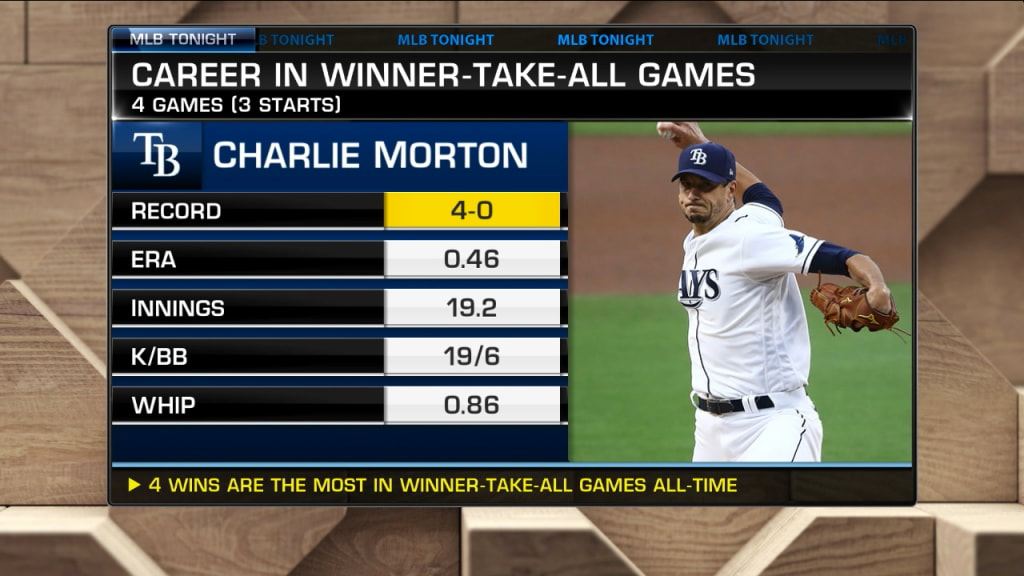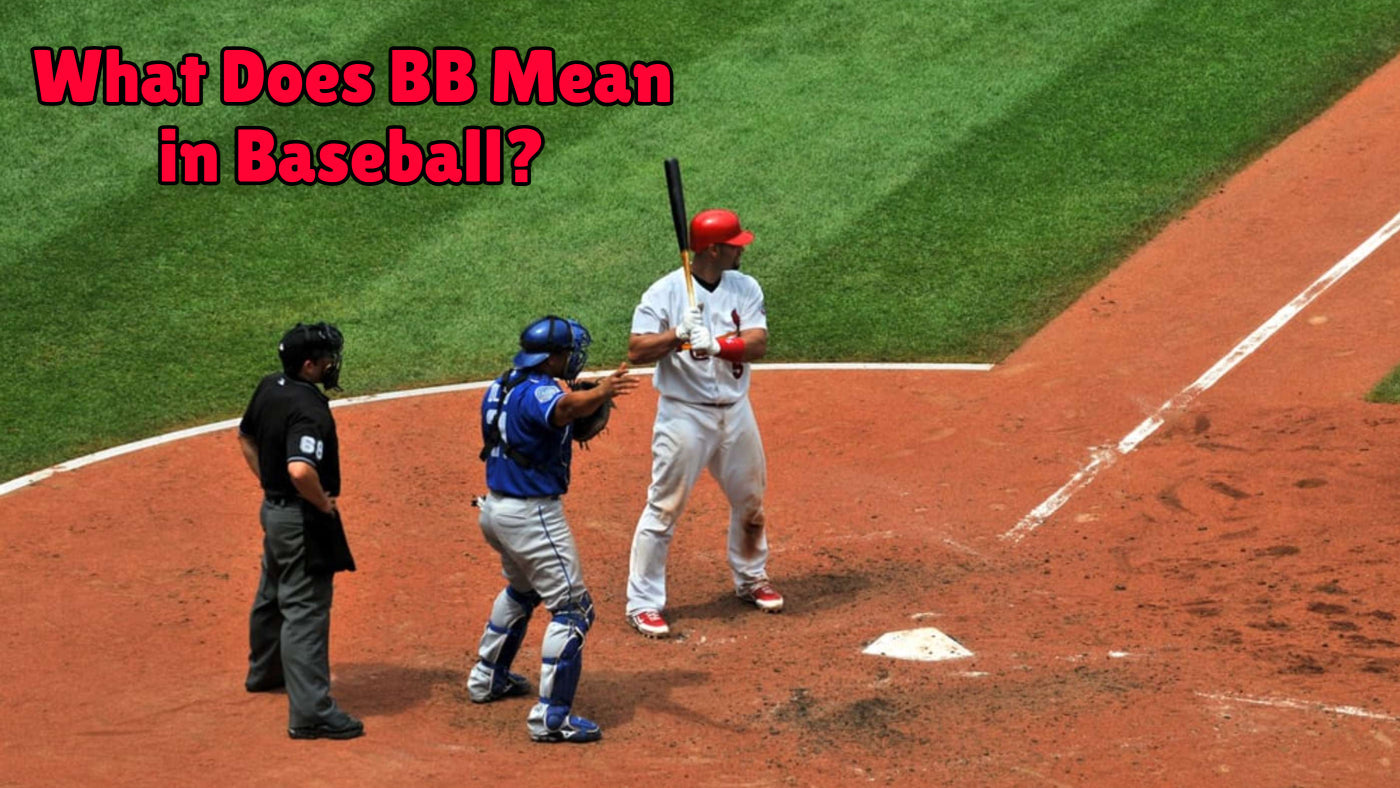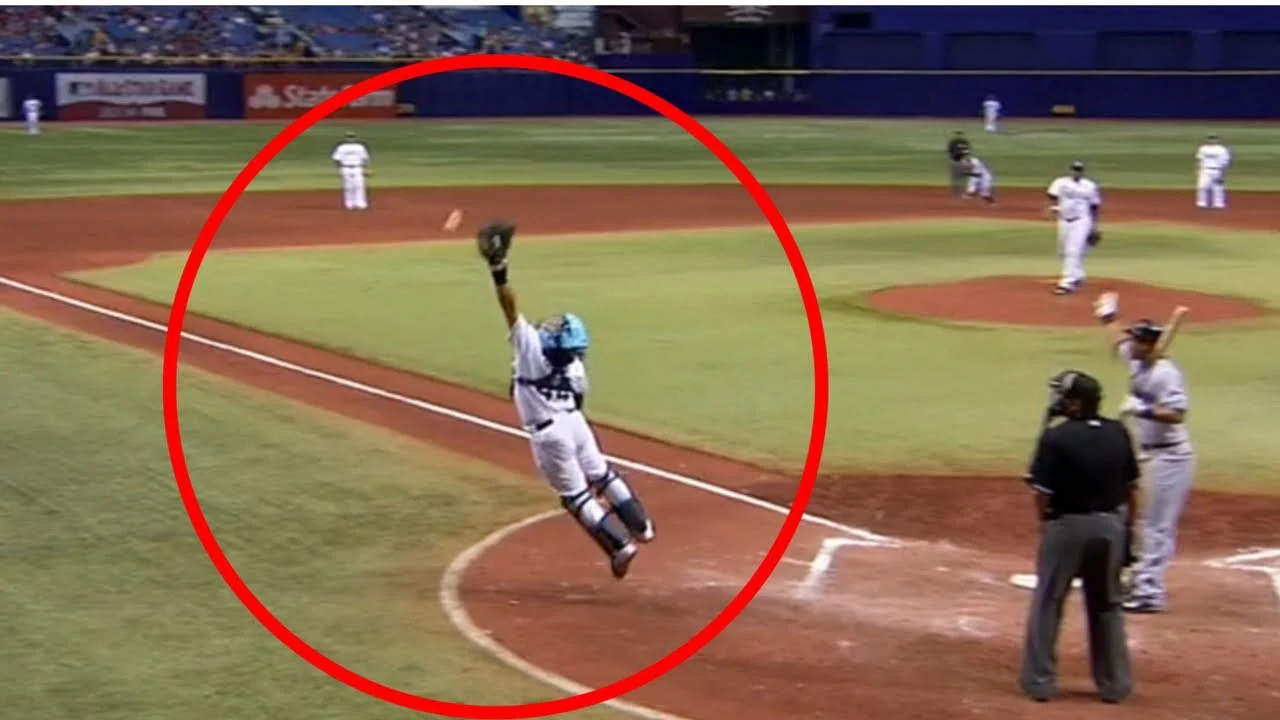Bb in baseball stands for “base on balls.” This occurs when a pitcher throws four pitches outside the strike zone.
Base on balls, commonly called a walk, is an important aspect of baseball. It allows the batter to advance to first base without hitting the ball. Walks can change the game’s dynamics, putting pressure on the pitcher and defense. Understanding this term is crucial for any baseball fan or player.
It highlights the strategic elements of the game, showcasing the battle between pitcher and batter. In this blog post, we’ll explore the significance of Bb in baseball, its rules, and how it impacts the game. Stay tuned to learn more about this intriguing aspect of baseball.

Credit: www.gaimday.com
Introduction To Bases On Balls
In baseball, many terms can be confusing for new fans. One such term is bases on balls, often abbreviated as Bb. This term is crucial in understanding the game’s strategy and flow. Let’s dive into what Bb means and why it matters.
Definition Of Bb
In simple terms, Bb stands for bases on balls. It occurs when a pitcher throws four pitches outside the strike zone, which the batter does not swing at. The batter is then awarded first base. This is commonly known as a walk.
| Term | Meaning |
|---|---|
| Bb | Bases on Balls |
| Walk | Four pitches outside the strike zone |
A walk allows the batter to reach first base without hitting the ball. This can be a strategic move in the game.
Importance In The Game
Walks play a significant role in baseball strategy. Here are some reasons why:
- Base Runners: A walk adds a runner on base. This can increase the chance of scoring runs.
- Pitcher Fatigue: Throwing many pitches can tire out the pitcher. Walks contribute to this fatigue.
- Scoring Opportunities: Walks can set up scoring opportunities. A runner on base is closer to home plate.
Coaches and players often look for walks to turn the game in their favor. Walks can change the momentum of an inning.
In summary, understanding bases on balls is key for any baseball fan. It adds depth to the game’s strategy and excitement.

Credit: www.suzitee.com
History Of Bases On Balls
The ‘bases on balls’ (Bb) rule has a rich history in baseball. It has evolved significantly since the early days of the sport. This evolution reflects changes in the game’s strategy and rules.
Origins Of The Rule
The origins of the bases on balls rule trace back to the mid-19th century. Early baseball didn’t have clear rules for walks. Pitchers often threw underhand and had few restrictions. Batters had to swing at almost every pitch. Over time, players and fans demanded more fairness. This led to the creation of the walk rule.
In 1863, the National Association of Base Ball Players introduced the first walk rule. It required pitchers to deliver nine balls outside the strike zone before a walk. This was a high number and rarely occurred. The rule aimed to balance the game but needed refinement.
Evolution Over Time
The walk rule evolved as baseball developed. In 1880, the National League reduced the number of balls needed for a walk to eight. This change made walks more common and strategic. By 1887, the number decreased again to five balls.
In 1889, the modern walk rule was established. Four balls outside the strike zone resulted in a walk. This rule remains in place today. It has become a crucial part of the game’s strategy. Pitchers and batters use walks to their advantage, affecting the game’s outcome.
The bases on balls rule has undergone many changes. Each change aimed to make the game fairer and more exciting. Today, the walk is a key element in baseball, influencing tactics and strategy.
Mechanics Of A Walk
The term ‘BB’ in baseball stands for ‘base on balls,’ commonly known as a ‘walk.’ A walk occurs when a batter receives four pitches outside the strike zone. Understanding the mechanics of a walk is essential for both pitchers and batters. It involves the pitcher’s role and the umpire’s decision.
Pitcher’s Role
The pitcher aims to throw the ball into the strike zone. The strike zone is the area over home plate between the batter’s knees and the midpoint of their torso. The pitcher must have control and precision.
If a pitcher throws four balls outside this zone, the batter earns a walk. Pitchers use different techniques and strategies to avoid walks. They might adjust their stance, grip, or pitch type.
Walks can be strategic. Sometimes pitchers give intentional walks to avoid facing a strong batter. This is done to increase the chance of getting an out with the next batter.
Umpire’s Decision
The umpire is the official who decides if a pitch is a ball or a strike. The umpire stands behind the catcher and has a clear view of the strike zone. They call each pitch based on its location.
If the umpire calls four pitches as balls, the batter is awarded a walk. The umpire’s decision is final and can greatly influence the game. Both the pitcher and batter must adapt to the umpire’s strike zone judgement.
Umpires must be consistent in their calls to maintain the game’s integrity. Players and coaches often study an umpire’s past decisions to anticipate their calls.

Credit: sportsbettingmaverick.com
Strategic Use Of Walks
The term “Bb” in baseball stands for “Base on Balls”, commonly known as a walk. Walks can play a significant role in a baseball game. They offer strategic advantages for both offensive and defensive teams. Understanding the strategic use of walks can enhance a team’s performance and influence the game’s outcome.
Offensive Strategy
For an offensive team, a walk can be a powerful tool. Walks allow players to reach base without hitting the ball. This can put pressure on the opposing pitcher and defense. A walk can also disrupt the pitcher’s rhythm and lead to more mistakes.
- Base Runners: Walks create opportunities for base runners. This can lead to stolen bases or scoring runs.
- Pitch Count: Drawing walks increases the pitch count. A high pitch count can tire the pitcher and force a pitching change.
Defensive Strategy
Defensively, walks can be a double-edged sword. While they put runners on base, they can also be used strategically. For example, a team might intentionally walk a strong hitter. This can set up a double play or bring a weaker hitter to the plate.
- Intentional Walks: These are used to avoid pitching to a dangerous batter.
- Double Play Setup: Walking a batter can set up a force out at multiple bases.
Both strategies require careful consideration and timing. Walks can change the game’s momentum. A well-timed walk can be as effective as a hit.
Impact On Player Statistics
In baseball, the term BB stands for Base on Balls or a walk. It plays a crucial role in player statistics. Walks can significantly affect a player’s performance metrics. Understanding this impact helps in evaluating a player’s overall contribution to the team.
Batting Average
Batting average (BA) measures a player’s hitting success. It is calculated by dividing a player’s hits by their at-bats (AB). However, walks are not included in at-bats. This exclusion means that a player with many walks may have a higher batting average. Here’s the formula for batting average:
BA = Hits / At-Bats
For example, consider a player with the following stats:
| Player | Hits | At-Bats | Walks | Batting Average |
|---|---|---|---|---|
| John Doe | 150 | 500 | 80 | 0.300 |
In this case, John Doe’s 80 walks do not affect his batting average directly. It remains at 0.300.
On-base Percentage
On-base percentage (OBP) is a vital statistic. It measures how often a player reaches base. Unlike batting average, OBP includes walks. The formula is:
OBP = (Hits + Walks + Hit-by-Pitch) / (At-Bats + Walks + Sacrifice Flies + Hit-by-Pitch)
Let’s look at John Doe’s OBP with his previous stats:
| Player | Hits | At-Bats | Walks | Hit-by-Pitch | Sacrifice Flies | On-Base Percentage |
|---|---|---|---|---|---|---|
| John Doe | 150 | 500 | 80 | 5 | 5 | 0.372 |
John Doe’s OBP is 0.372, which includes his walks. This shows that walks positively impact OBP.
Famous Walks In Baseball History
Baseball is a game of strategy and skill. A walk, also known as a “base on balls” (Bb), is a key moment. It can change the course of a game. Famous walks in baseball history are cherished by fans. They are moments of patience and precision. Let’s dive into some of the most memorable walks in baseball history.
Memorable Moments
One of the most iconic walks happened during the 2004 ALCS. The Boston Red Sox were facing the New York Yankees. David Ortiz’s walk in the 12th inning was crucial. It set the stage for the Red Sox’s comeback. They won the series and eventually the World Series.
Another unforgettable walk took place in 1998. Mark McGwire was on his way to breaking the home run record. In a game against the Chicago Cubs, he was intentionally walked. This walk highlighted his fearsome reputation. Fans still remember the tension in the stadium that day.
Legendary Players
Babe Ruth, known for his home runs, also had many walks. He had a keen eye for pitches. Ruth’s walks showed his strategic approach to the game. They contributed to his legendary status.
Barry Bonds holds the record for most walks in a single season. In 2004, he walked 232 times. Bonds’ ability to draw walks made him a formidable player. His patience at the plate was unmatched.
Rickey Henderson is another legend known for his walks. He holds the record for most career walks. Henderson’s speed and discipline made him a dual threat. His walks often led to stolen bases, changing the game’s dynamics.
Common Misconceptions
Understanding the term “Bb” in baseball can be tricky. Many people have misconceptions about what a walk or “Bb” means in the game. These misunderstandings can lead to confusion during a game. Let’s clear up these common misconceptions.
Myths About Walks
Some fans think a walk happens only with a bad pitch. This is not always the case. A walk can occur for various reasons. Sometimes, a pitcher may intentionally walk a batter. This can be a strategic move. It is not always a result of poor pitching.
Another myth is that walks are not valuable. Walks can be very beneficial. They allow a player to reach base without swinging. This can lead to more scoring opportunities. Every base runner is important in baseball.
Clarifying Rules
Many people believe a walk is just four balls. While true, it is not the whole story. A batter must remain patient and aware. They need to know when to swing and when to hold back.
Some think walks are rare. In fact, they are quite common. Pitchers often aim to avoid giving up hits. This can lead to more walks. It is a strategic part of the game. Understanding these rules helps fans appreciate baseball more.
Frequently Asked Questions
What Does Bb Mean In Baseball?
BB in baseball stands for “Base on Balls” or “walk. ” It occurs when a batter receives four balls from the pitcher, allowing them to advance to first base.
How Is A Bb Recorded In Baseball?
A BB is recorded when a batter receives four pitches outside the strike zone. The batter advances to first base without hitting the ball.
Why Is A Bb Important In Baseball?
A BB is important because it allows the batter to reach base without hitting the ball. This can lead to scoring opportunities.
How Does A Bb Affect A Pitcher’s Stats?
A BB negatively affects a pitcher’s stats. It increases their walk rate and can lead to higher pitch counts, reducing their effectiveness.
Conclusion
Understanding “Bb” in baseball is essential for enjoying the sport. It stands for “base on balls” or a walk. This rule adds excitement and strategy to the game. Knowing these terms helps you appreciate players’ skills. So, next time you watch a game, you’ll follow the action better.
Baseball’s unique rules make it thrilling. Keep learning and enjoy the game even more.





